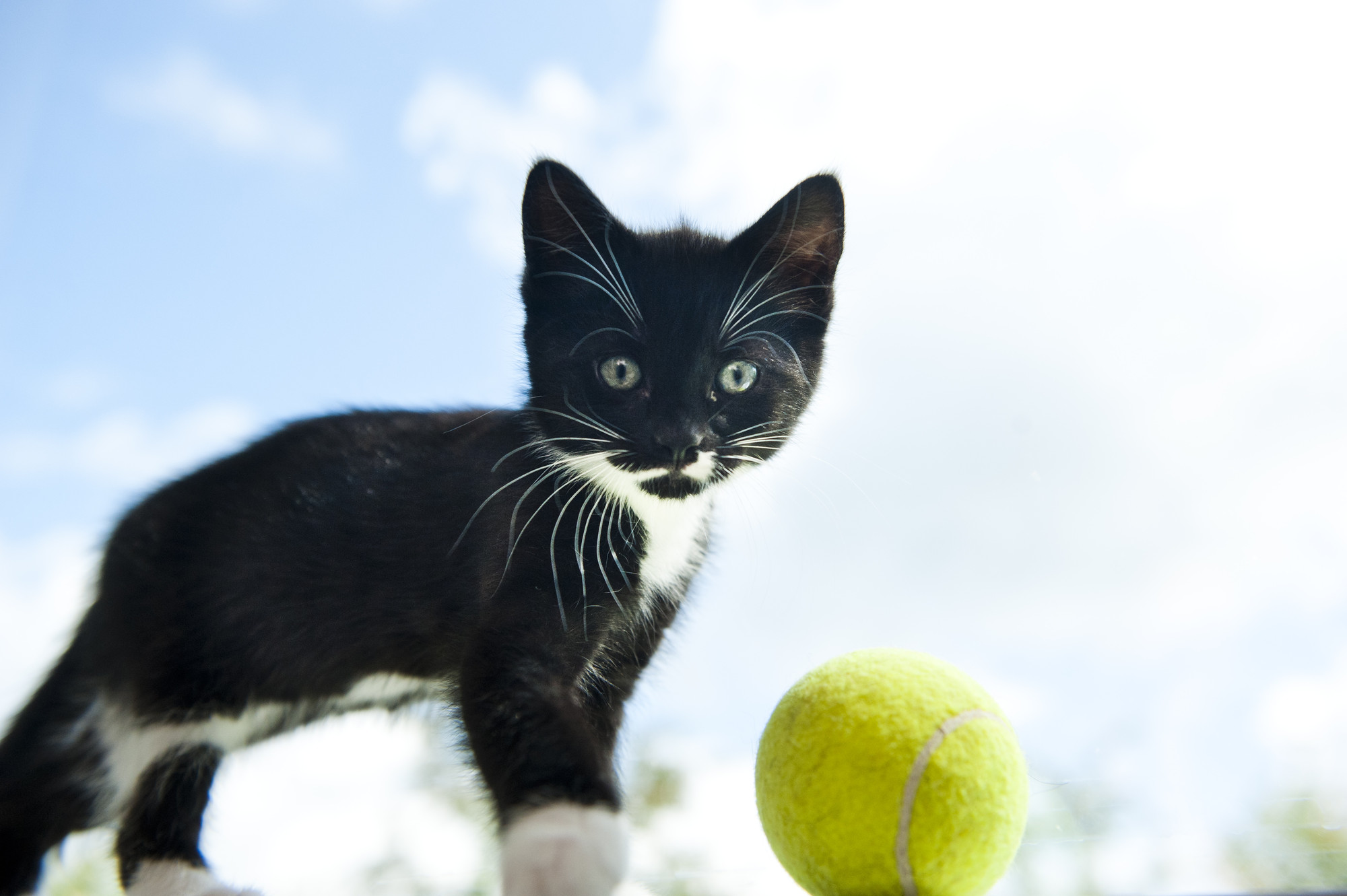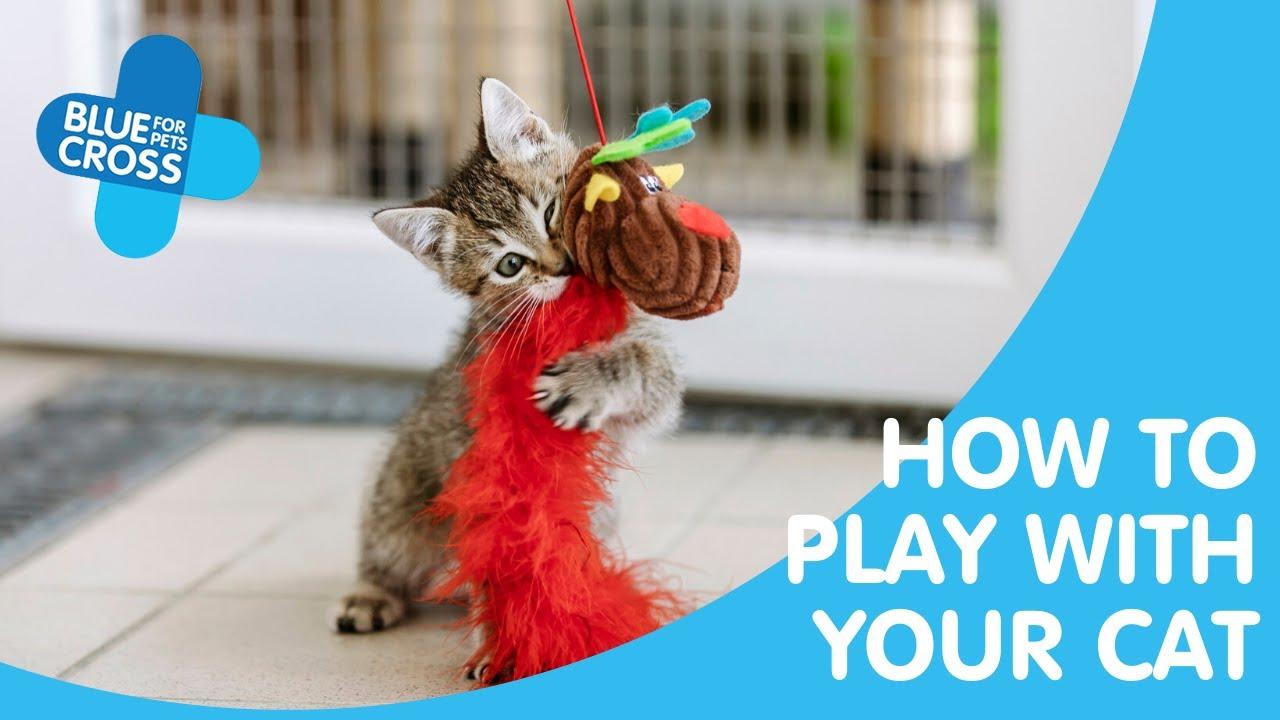
How to play with your cat
Kittens and cats need to play so it is important that you provide an appropriate outlet for play either by playing interactive games or by providing suitable toys. Playing with your cat regularly will teach you about your cat’s personality and strengthen the bond and trust between you.
Why play?
Play assists young kittens’ physical development and coordination. By playing with their siblings they also improve and refine their social and communication skills. As kittens grow older their play changes and by the time they are 14 weeks old their play is mainly directed towards objects, which they stalk, pounce on, bat, grasp and bite. These are the skills they need for hunting. Play provides an outlet for your cat’s predatory instincts and also relieves boredom, prevents behaviour problems and provides exercise which reduces weight gain and future health problems. This is especially important for cats without access outdoors.
Toys
There are many toys available from pet stores including fishing rod type toys, balls and artificial mice. But you don’t have to spend a lot of money. Feathers, balls, cotton reels, paper shopping bags (not plastic) and cardboard boxes can all be great fun. Whatever you use, make sure it is suitable for your cat – avoid items with small attachments that could break off and be swallowed.
What do cats like to play with?
Cats like movement so the toy must be one that can move in rapid and unpredictable ways, just like a mouse or bird. Toys that reflect light or appear to change in some way are particularly attractive. Cats also like toys with different textures that are around the size of their natural prey (such as mice). Many cats love squeaky toys but some cats are startled by them so introduce them carefully.
You can increase the interest your cat shows in a toy by rubbing the toy in catnip (Nepeta cataria). About 50 per cent of cats will respond to the active but harmless chemical in this herb, by miaowing and rolling.
Cats can become bored with the same toys so be sure to swap the toys every few days to keep your cat interested.
Interactive games
Different cats will prefer different types of games, but don’t play rough and tumble games or tease your cat by moving your fingers or feet under duvets and rugs. Both are great games but can encourage your cat to grab and bite you.
A few short daily sessions are better than one long session as this mimics the normal activity patterns of your cat.
Fishing-rod-type toys
Don’t lift these toys so high that you encourage your cat to jump up. Allow your cat time to “catch” the fabric creature with its paws and bite at it, otherwise your cat may get frustrated or lose interest. Always tidy this type of toy away after play as your cat could get tangled in the string or tear off small pieces of fabric and swallow them.
Climbing
Cats love to climb and a tiered scratching post is ideal for this purpose. This type of design helps your cat feel safe as it provides hiding places and a high shelf from which to watch the world go by.
Food games
Pet cats don’t have to hunt for their food but you can add some excitement and activity into feeding time by using a food ball. This is a ball just bigger than a tennis ball, in which you can put dried cat food. As the cat pushes and bats the ball with its paws the pieces of food fall out. A piece of tuna or cat treats in a scrunched up piece of paper can also provide fun for your cat.
Balls
Make balls more interesting by pulling them along on string or throwing them up the stairs so that they bounce back. See if your cat can catch them before the ball reaches the bottom.
Scratching
Cats love to scratch and stretch and need to exercise their paws and keep their claws in good shape. Make sure you provide a scratching post (the taller the better).
Hiding
Cats like to hide and pounce in and out of boxes and small cat tents. These can also be used when your cat needs some privacy. Encourage your cat into these areas with toys and food.
Training
Training your cat to do tricks can be good fun for both of you and it keeps your cat’s mind active. Keep the training light-hearted and fun – never force your cat to do anything.
Remember:
- Play for a few short sessions every day
- Allow your cat to catch and grab the toy at the end of each game
- Provide a variety of toys
- At the end of each session tidy away toys with string, or anything that might present a danger to your cat
- Never force your cat to play or be trained
- Have fun!





